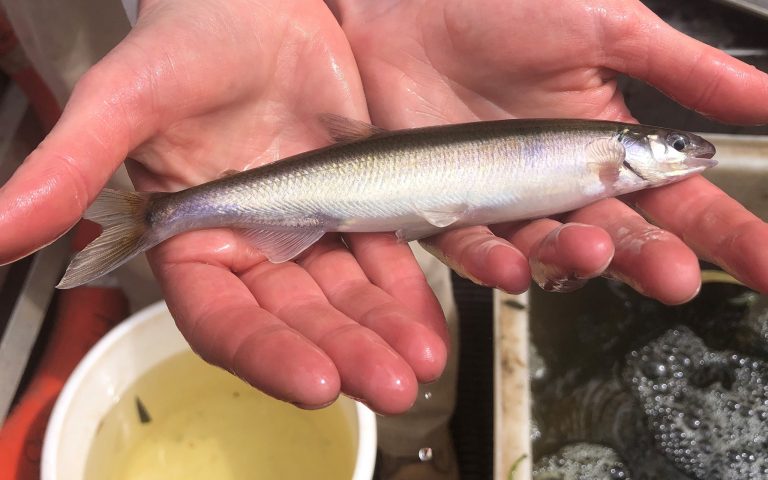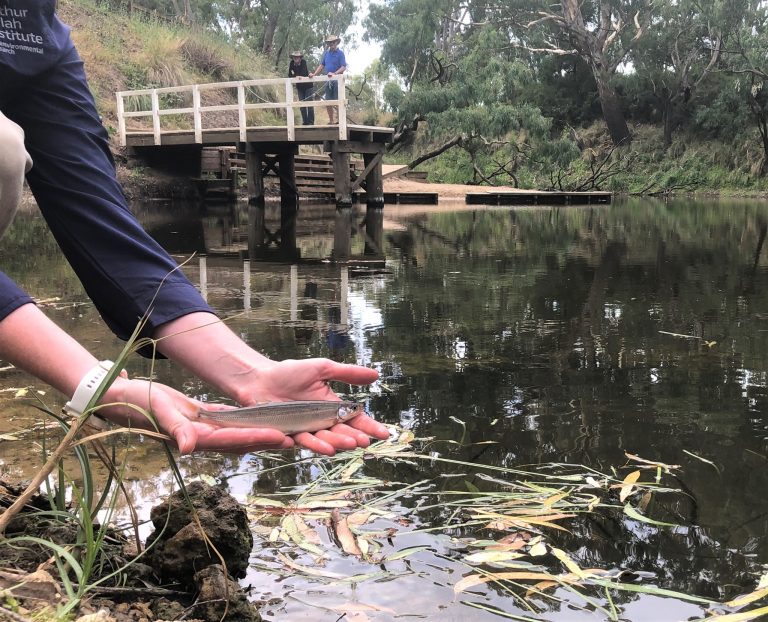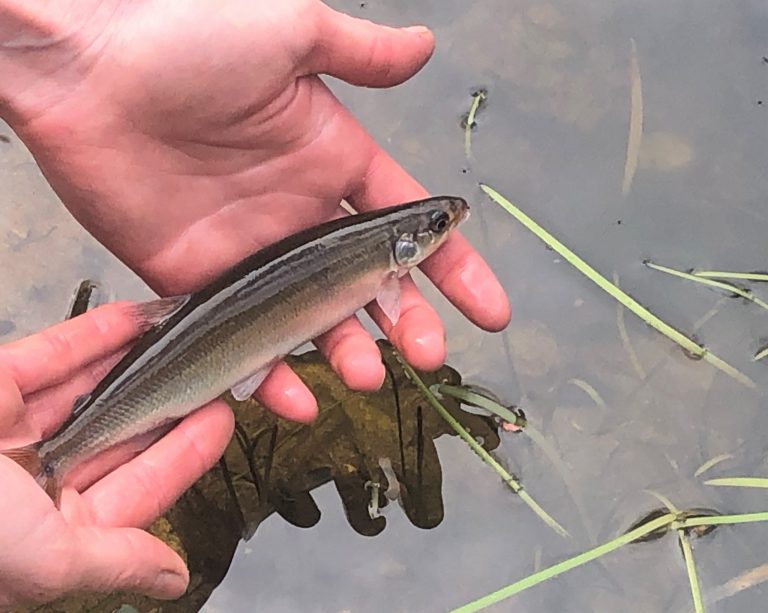Australian Grayling
The Australian Grayling Fish was found in the Glenelg River in 2019 for the first time in over 100 years.
In 2021, a second fish was found as part of the same monitoring program. It was an exciting find for the team at the Arthur Rylah Institute and all of us at the Glenelg Hopkins CMA as it reflects the importance and benefit of the many healthy river projects the Glenelg Hopkins CMA undertakes.
BREAKING NEWS: Australian Grayling found!

In a sensational discovery in the Glenelg River in south west Victoria near Dartmoor, only the second Australian Grayling in 122 years has been found as part of a native fish monitoring program. Two years ago, an Australian grayling (Prototroctes maraena) was caught during fish monitoring activities – the first verified report of this nationally threatened species in the Glenelg River in 122 years. On Monday (22 February 2021) , they have done it again. Scientists from Arthur Rylah Institute for Environmental Science (ARI) found the grayling while undertaking fish monitoring for the Native Fish Report Card program. The adult fish was safely returned to the river.
Once abundant throughout the coastal rivers of south-eastern Australia, Australian grayling populations have declined due to altered river flows, water extraction and barriers to fish movement such as weirs. Grayling need certain types of flows at different times of the year to trigger and enable breeding migrations between freshwater and the ocean. Adult fish need to move upstream to spawn, while juveniles require suitable flows to move downstream into nursery areas in estuaries and the ocean.
Photos courtesy of Arthur Rylah Institute for Environmental Science (ARI).


ARI research in Victorian coastal rivers shows that Australian grayling benefit from flow pulses or ‘freshes’ to stimulate spawning migrations. That’s where we come in – managing delivery of water for the environment to the regulated Glenelg River. Returning flows to the Glenelg at the right rate, time and place helps to keep river habitats connected for fish that need to move about. Estuary perch and black bream also rely on flow cues for spawning and recruitment. An environmental ‘fresh’ is currently moving through the upper Glenelg River to keep it healthy and fish moving freely. The Native Fish Report Card program – supported by Department of Environment, Land, Water and Planning and Victorian Fisheries Authority – monitors fish populations annually.
What is an Australian Grayling?

| Common Name: Australian Grayling | |
| Other Names: Cucumber Mullet, Cucumber Fish, Yarra Herring | |
| Family: Prototroctidae | |
| Scientific Name: Protroctes Maraena (Gunther 1864) | |
| Origin: Native |
Conservation Status
State: Classified as ‘threatened’ under the Flora and Fauna Guarantee Act 1988.
Federal: Classified as ‘vulnerable’ under the Environment Protection and Biodiversity Conservation Act 1999.
Description
Slender body with a small head. Large eyes, usually bright yellow; rounded snout. Lower jaw is shorter than the upper jaw. Adipose fin. Mouth reaches to below the eye. No scales on the head and no lateral line. Brownish to olive or grey on the upper body, lighter on the sides, belly is usually white or yellowish. Peculiar cucumber smell given off by freshly caught fish.
Distribution
Coastal drainages from the Hopkins River eastwards. Can occur well inland in these streams. Once common in all waters, it is still abundant in some localities.
The Australian grayling was considered extinct in Victoria pre 1970 because the population once abundant in the Yarra River (and fished by anglers) appeared to have diminished. The start of wide-ranging fish surveys by the Fisheries and Wildlife Department in the early 1970’s found good numbers of grayling first in the Combienbar River in Gippsland, then in almost all coastal waters west of the Hopkins River. Very large populations were found in the Mitchell, Tambo and Barwon Rivers. Surveys revealed that they still occurred in the lower Yarra River and should now recolonise upstream since a fishway has been constructed at Dight’s Falls.
Habitat
River and streams with a cool, clear, moderate flow, with a gravel substrate and alternating pools and riffles.
Brief Biology
Known to reach 33cm in length, most common at 17-19cm. Believed to be omnivorous, taking insect larvae of various types, small crustaceans, and plant material. Matures sexually at 1-2 years of age and 15cm, females appear to mature after 2 years in fresh water, producing an average of 47,000 eggs.
Complete life-cycle is not known, but current view is that spawning takes place in the freshwater mid-reaches of streams during late April-early May. Eggs are scattered over the substrate and newly hatched larvae are presumed to be swept downstream to brackish water where they remain for about 6 months.
Newly-hatched fish are known to react strongly to light, preferring shady areas.
During November juveniles ascend to the mid-reaches of the river where they spend the rest of their lives. Evidence indicates that the majority of grayling die before or during their third year.


